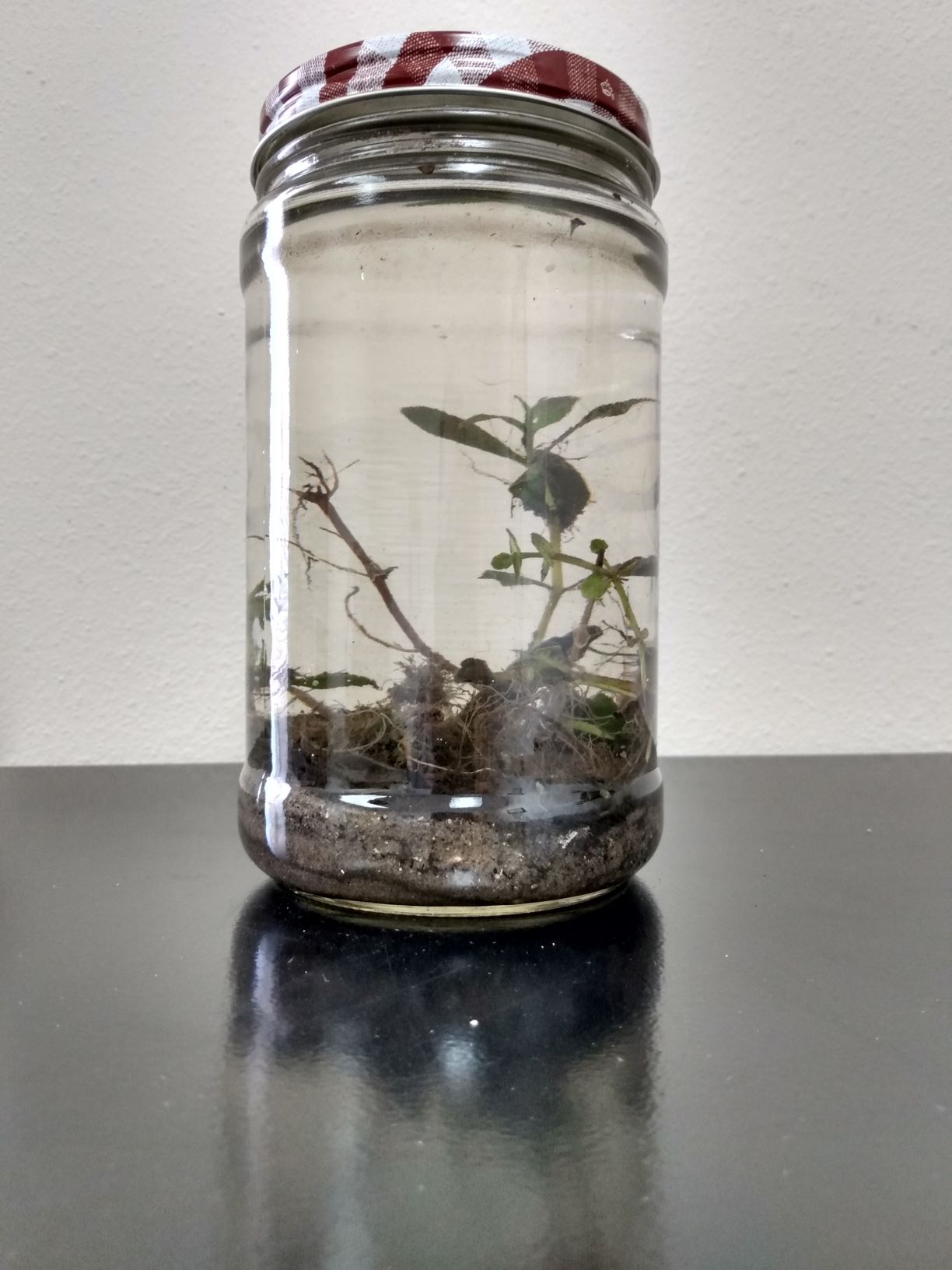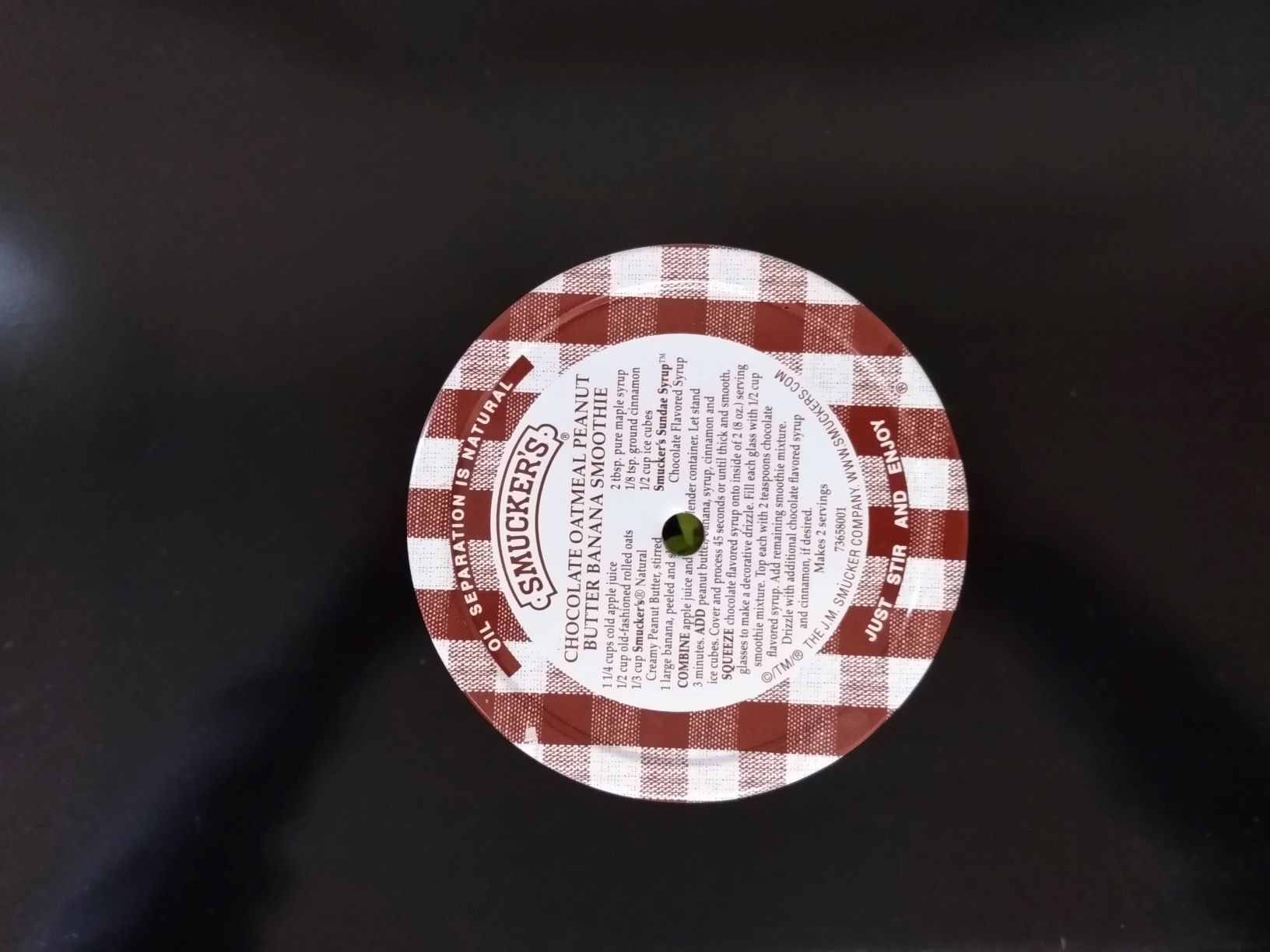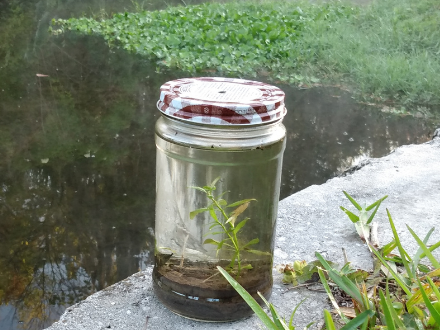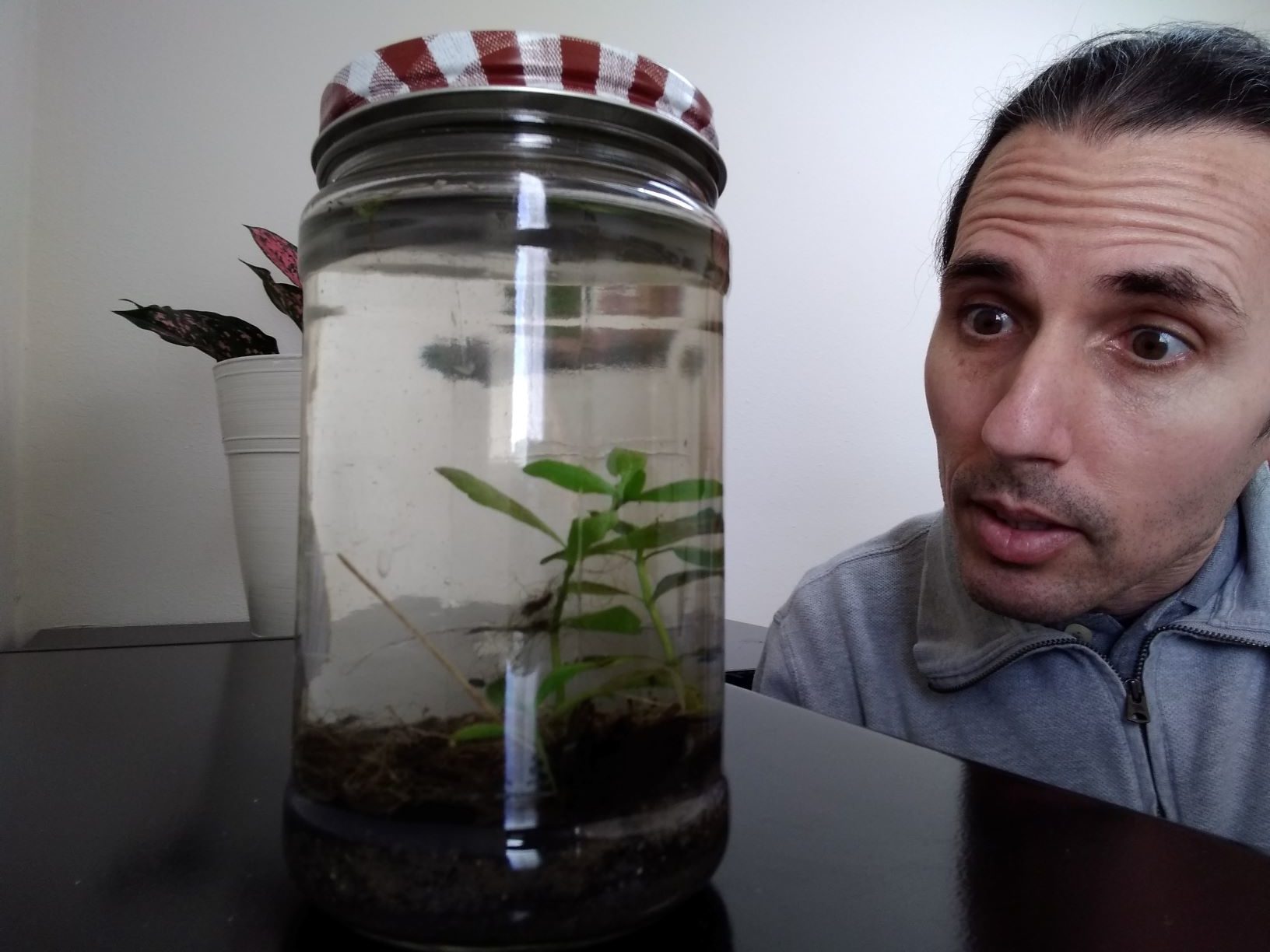 Aquariums can be beautiful pieces of living art but they are also a lot of work. Wouldn’t it be great if we could bring beautiful natural environments indoors without the extra chores? The wild places that we love take care of themselves. That’s because a healthy ecosystem is perfectly balanced to keep itself going. If only we could find a way to do that in a smaller container…
Aquariums can be beautiful pieces of living art but they are also a lot of work. Wouldn’t it be great if we could bring beautiful natural environments indoors without the extra chores? The wild places that we love take care of themselves. That’s because a healthy ecosystem is perfectly balanced to keep itself going. If only we could find a way to do that in a smaller container…
By John McGee
Turns out we can! People have been experimenting with biospheres for years. The idea is to create a balanced ecosystem in a container. These containers can be as big as a space station, or as small as a tiny glass vial. The thing they all have in common is that they contain an ecosystem that will function for years on its own.
Sounds complicated, right? It can be but there are some you can build at home in one afternoon. Here’s how.
Start with a glass jar that has a lid. I prefer to upcycle stuff from the recycle bin. I’m using a peanut butter jar, because it has a wide enough mouth to get my hand in. But anything will work as long as it’s glass. Plastic might work for a while, but it’s likely to leach potentially toxic chemicals, including bisphenol A and phthalates.
Once you select your jar, make sure it’s clean, then find an ecosystem. Fortunately, there are tons of them just outside your door. For this project, we’ll use a pond or a creek. Here in Florida, you probably have one nearby. Try to find one that is clear and clean because you want to see what’s happening in the jar. Now, carefully scoop up a few small plants by the roots and get a bit of the bottom sediment too. Carefully set them in your jar. Try to fill the jar about a quarter of the way with sediment. Be careful not to break the plants and keep as much of the sediment around their roots as you can. If you have a narrow-mouthed jar, you can use tweezers or chopsticks to help.
When you have everything arranged in a way you like, very gently fill the rest of the jar up with water from the same place. Remember, you can’t use tap water because it’s made to stop all the tiny life from growing. Life is well-suited for the pond, but not so much in your coffee or soup.
 For young ecologists in training, ask a responsible adult to punch a hole in the lid, so your pond in a jar can get some air. With practice, you can try a biosphere without oxygen, but they’re trickier to balance. Put the lid on and place the jar in a bright location, like a window. The water will be a bit cloudy at first, so give it a few days to settle. If you did it right, the water will clear up and you’ll have a thin black layer of organic matter settled on top of the sandier sediment. Now just watch! The plants should start growing and you’ll even start to see little swimmers and crawlers, such as amphipods and copepods, moving around in there.
For young ecologists in training, ask a responsible adult to punch a hole in the lid, so your pond in a jar can get some air. With practice, you can try a biosphere without oxygen, but they’re trickier to balance. Put the lid on and place the jar in a bright location, like a window. The water will be a bit cloudy at first, so give it a few days to settle. If you did it right, the water will clear up and you’ll have a thin black layer of organic matter settled on top of the sandier sediment. Now just watch! The plants should start growing and you’ll even start to see little swimmers and crawlers, such as amphipods and copepods, moving around in there.
Pay attention to your jar every day to see how things are changing. If something goes wrong, don’t worry, just wait to see if it will balance itself out. If it dies or gets icky, clean it out and try again. That’s how you learn about ecosystems — no textbooks needed. My jars have run for years. In fact, I usually end up having to give them away because they just keep going.
The one pictured here is on my desk. It makes an awesome decoration and conversation piece. People stop by to see what’s happening and it sparks all kinds of creative discussion. I’ve done these at schools and community events too. Kids and parents love making them and watching what happens.
John McGee has over 20 years of experience in the environmental field in Florida. He is most noted for developing the Adopt-A-Pond educational concept that still exists in Hillsborough County and has been replicated in various parts of the state. He currently serves as environmental coordinator for a local municipality and owns a small business that combats the many health issues resulting from lack of contact with the outdoors.

